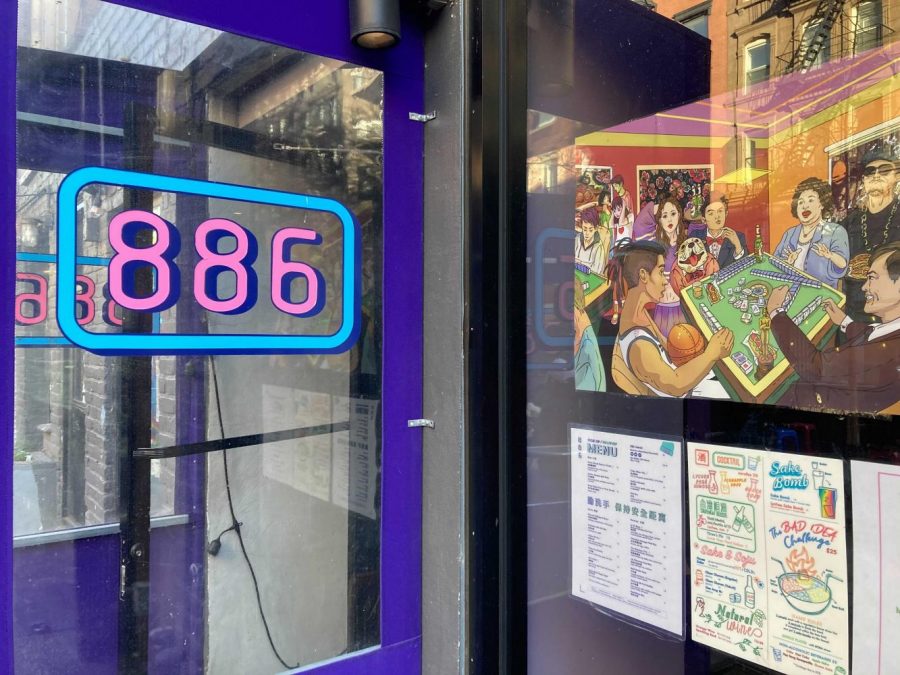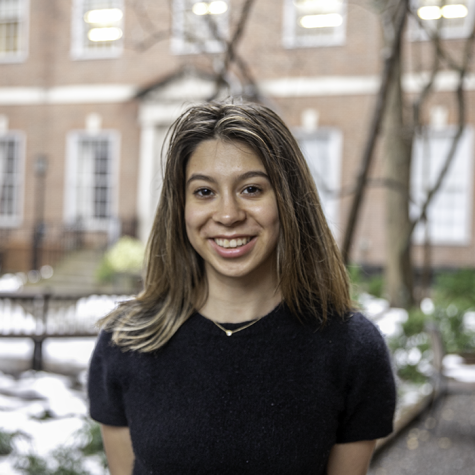Taiwanese restaurant 886 is taking the New York restaurant scene by storm with its incredible service, food and devotion to its community. The St. Marks restaurant puts a New York flair on traditional Taiwanese cuisine with dishes like The Notorious T.F.C., while offering classics like three cup chicken.
I was fortunate enough to dine at 886 twice before the onset of COVID-19. Though it’s been a year since I last ate there, the taste of its food still lingers in my mind. The first time I went to the restaurant, I was accompanied by my friend and her mom, who immigrated from Taiwan. We split a variety of dishes, including the honey-glazed popcorn chicken and fly’s head, a type of ground-pork stir-fry, all of which opened my mind to the delicious, intricate flavors of Taiwanese cuisine. My only complaint: why hadn’t I come sooner?
Going once with my friend wasn’t enough, so I brought my parents when they visited me during the 2019 Thanksgiving break. Twice wasn’t enough either. I was determined to return to 886 to learn about the multitude of ingredients, textures and spices that Taiwanese cuisine encompasses.
Unfortunately, COVID-19 stopped me in my tracks. You know how the story goes.
Like many restaurants, 886 was forced to close its doors and furlough its staff due to financial distress. The restaurant set up a fundraiser for its employees, but what came next launched 886 into a new realm.
The restaurant received over $120,000 in donations, far more than expected. After hiring back their staff, owners Andy Chuang and Eric Sze chose not to invest the surplus in their own business. Instead, they paid other struggling restaurants to help them prepare packaged meals for hospital workers during the height of the pandemic.
I had the opportunity to speak with Chuang, the co-owner of 886 and an NYU alum, about this decision and how the restaurant navigated the challenges of the pandemic.
Gabby: How did COVID-19 impact your business?
Chuang: It was a difficult time because we have employees who are here who don’t have benefits. They essentially had no income apart from us. We shut down, and our income was also zero, so we had to find a way to survive, right? One thing led to another, and we started doing packaged meals.
Gabby: I watched a video on your website about your work during COVID-19. The video mentioned that you and your co-owner established a fundraiser on social media. Can you talk to me about that?
Chuang: At first, we were trying to do prepackaged bento boxes for people to purchase. All proceeds went to our kitchen staff. Once people started hearing about that through Instagram, one of our customers, who is not in the city, gave us $50 and told us, “Yo, take this $50, take these five meals and give it to whoever needs it.” On that same day, one of my friends who was working in a hospital, she came in wanting to support us, and I was like, “Hey, I have these five meals, and I heard it was pretty bad in the hospital, would you mind taking [them].” We gave it to her and posted about it on Instagram. One thing led to another, and we started getting donations all over the place.
Gabby: How long were you preparing and delivering meals to hospital workers?
Chuang: Beginning of March to the end of May. We did it until the government told us we could open back up for delivery only. That’s when we decided to transition back into what we do.
Gabby: How many meals did you distribute to hospital workers?
Chuang: It was about 10,000 or 11,000 meals. We received around $120,000 [from the fundraiser] and we split it between four or five restaurants. Yeah, it kept us through the months.
Gabby: That’s incredible. How has this act impacted you and your business?
Chuang: For us personally — Eric and I — my business partner, that was the most fulfilling thing we’ve done in our life. We started a nonprofit to do the exact same thing. It hasn’t been approved yet by the government, but the premise is the same: receive donations, use that money to purchase meals from struggling restaurants and delivering them to people who are in need. Whether that is shelters, homeless people or the hospitals during the pandemic. So that is in the works. As a business, we were able to survive, but we just wanted to play a bigger role in the community.
Gabby: The video also mentioned that you received enough money to hire back some of your staff and that you gave some of it to other restaurants. What inspired you to give this money to other restaurants instead of keeping it for yourself?
Chuang: They’re our friends — we know that they would do the same for us. We were receiving so much money and demand from hospitals that one restaurant wasn’t able to handle it. On the best day, cooking the whole day, we could make 300 packaged meals. But I was getting requests for 600 meals a day, so we had to ramp up production. The second part of that is they’re our friends. We want them to survive the pandemic as well. [With the help of] Ho Foods, Raku and Patisserie Fouet, we made around 1,000 meals a day.
Gabby: Given the recent increase in hate crimes against Asians, what decisions, if any, have you made to protect your staff, business and community?
Chuang: Some of my staff walk home from work with chaperones. It’s both disturbing and unbelievable what has happened. In one way, it just sucks. It’s nothing we can control, but we want to give people a platform to talk about it. A month ago, we created this campaign called Enough is Enough. We were doing what we knew best: receiving donations, leveraging brands of about fifteen Asian restaurants, using our social media platforms to talk about these issues. We just wanted to get the conversation going.
Gabby: As an NYU alum, what advice would you give current students about pursuing their goals?
Chuang: You have to be willing to learn. For me, I started this with my business partner, we both didn’t know anything about launching a business, but we found learning new things fun, as opposed to viewing it as some burden or some text. Another thing is to be flexible: There’s so much pressure nowadays where you have to find out one passion and run with it. I don’t think that’s the case. Do things that interest you. For example, we’re in the restaurant business but we’re going to dip our toes in the nonprofit business and putting products on the shelves.
Gabby: Now, one last question: what is your favorite item on the menu, or what would you recommend for guests to try?
Chuang: We’re about to change our menu next week. But the one thing exciting me a lot right now is pig blood’s cake. It’s a very common Taiwanese snack, but it’s so hard to find here. We were finally able to make it ourselves. Come through and try it out.
Email Gabby Lozano at [email protected].
























































































































































